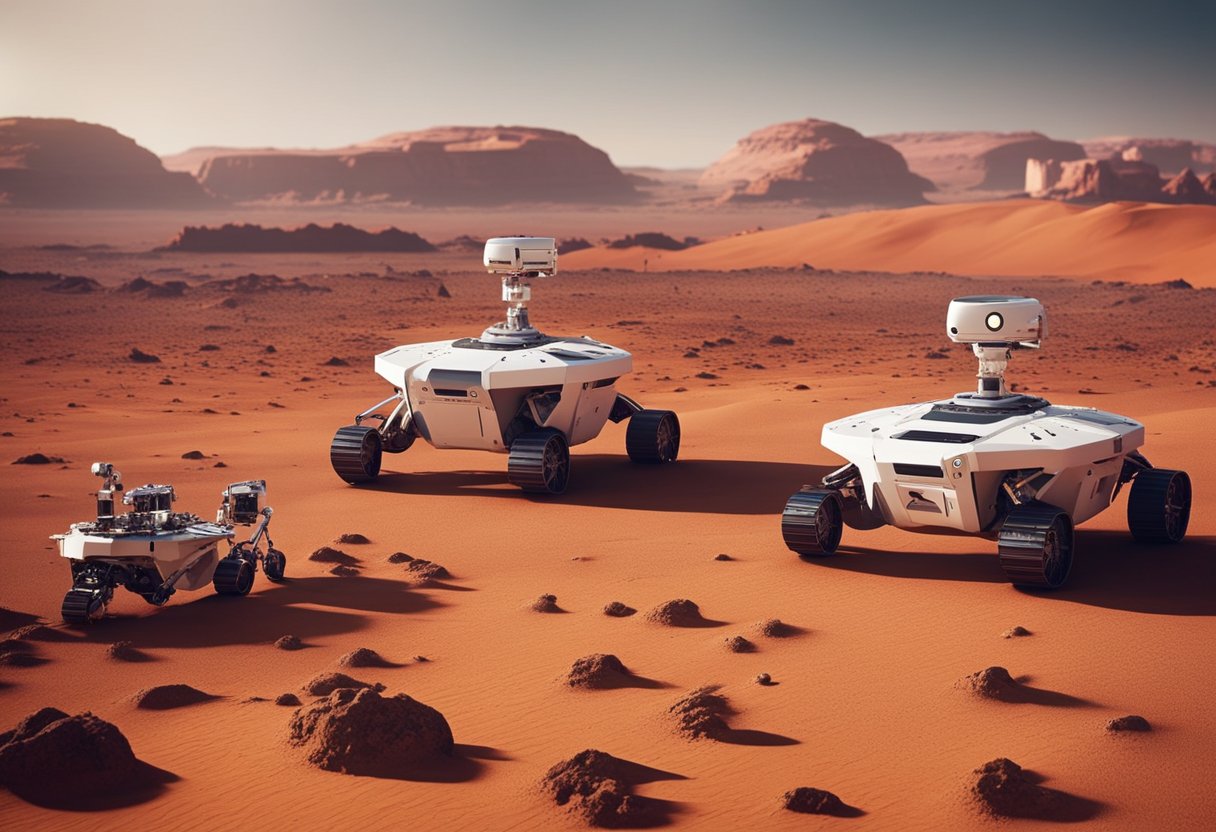
Mars colonisation represents a new frontier for humanity’s exploration ambitions. As we cast our sights beyond our Earthly confines, the prospect of establishing a permanent human presence on Mars has transitioned from the realm of science fiction to that of imminent possibility. With entities like SpaceX openly discussing their plans for a Mars colony, the narrative has swiftly moved towards logistical planning and execution. Pioneering this effort requires a mix of technological innovation, sustainable living considerations, and a substantial ethical debate.
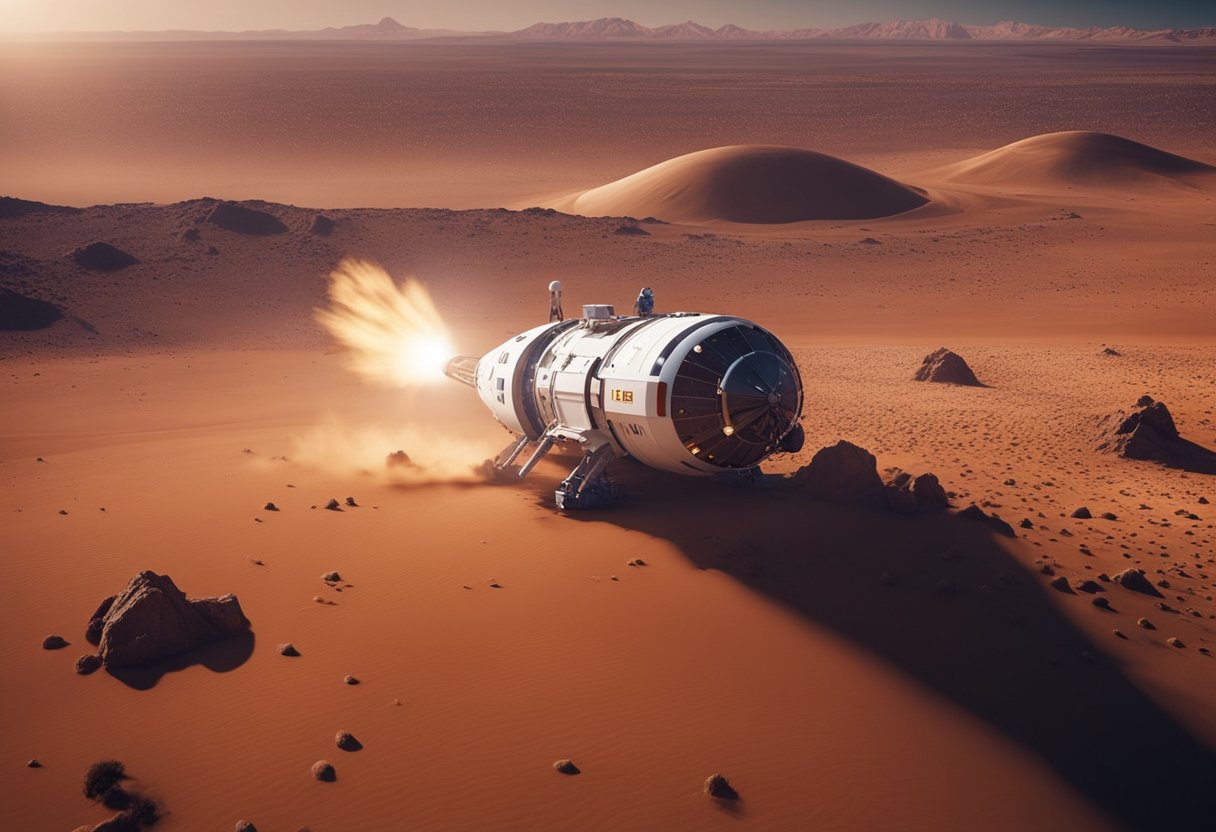
Our understanding of Mars has evolved significantly, informed by historical milestones and modern science’s triumphs. The challenges we expect to face in colonisation are multifaceted, pollution, from solving technological barriers to ensuring economic viability and addressing potent ethical questions. As we prepare for this colossal leap for humankind, we are shaping the methodologies and tools necessary to make living on Mars a reality. This requires preparing potential colonists for the rigours of space travel and life in a new world, while also creating frameworks to handle the environmental and cultural impacts on Mars and Earth alike.
Space tourism, including the distinct possibility of Mars tours, has begun to manifest itself in nascent ventures, such as those being documented on SpaceVoyageVentures.com. While we remain at the dawn of this epoch, the site captures the essence of a near future where Mars tours might progress from a dream to an option for the more adventurous souls among us.
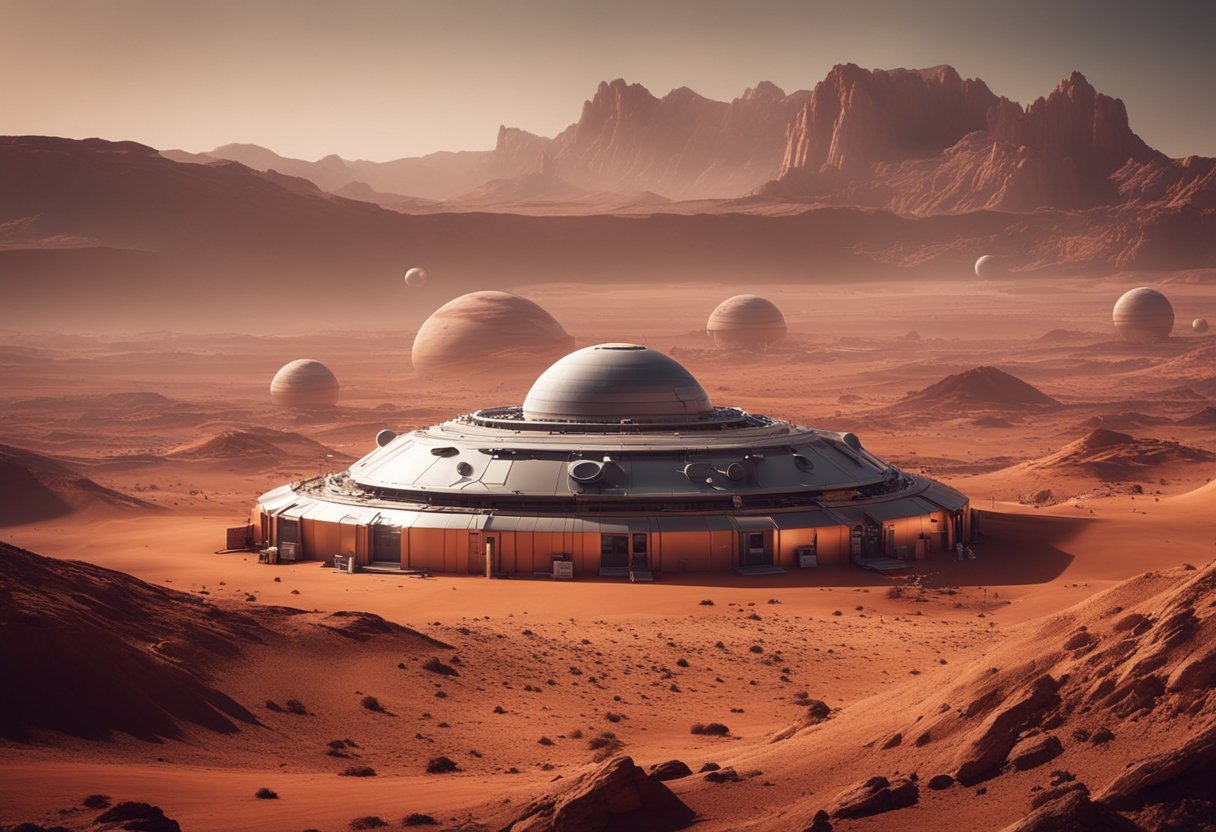
Mars, often referred to as the “Red Planet” due to its reddish appearance, is a world of great interest for its potential for human exploration and colonisation. We’ll explore its geography and climate, as well as its atmosphere and magnetosphere, key considerations for future Mars tourism ventures.
Mars hosts the largest volcano in the Solar System, Olympus Mons, and the longest, deepest canyon known as Valles Marineris. Its geography is both immense and diverse, with polar ice caps that contain frozen water and carbon dioxide, dusty plains, and ancient river valleys. Mars’s surface area is 144.8 million square kilometres, about 28% of Earth’s, resulting in a surface gravity of 38% that of our home planet, which could make for an interesting microgravity experience for tourists.
The climate on Mars is significantly colder than Earth’s, with average temperatures around -80 degrees Fahrenheit (-62 degrees Celsius), though they can vary from -195 F (-125 C) near the poles during winter to a maximum of 70 F (20 C) at equator during summer. Solar energy reaches Mars with less intensity, as it is about 50% farther from the sun than Earth is.
Mars’s thin atmosphere, composed primarily of carbon dioxide, poses a challenge for colonisation and touristic activities, as it offers little protection from solar and cosmic radiation. The lack of a global magnetic field, or magnetosphere, means that the planet cannot shield itself effectively from solar winds and charged particles like Earth does. Despite that, the possibility of harnessing the available solar energy inspires confidence in sustained endeavours on the Martian surface.
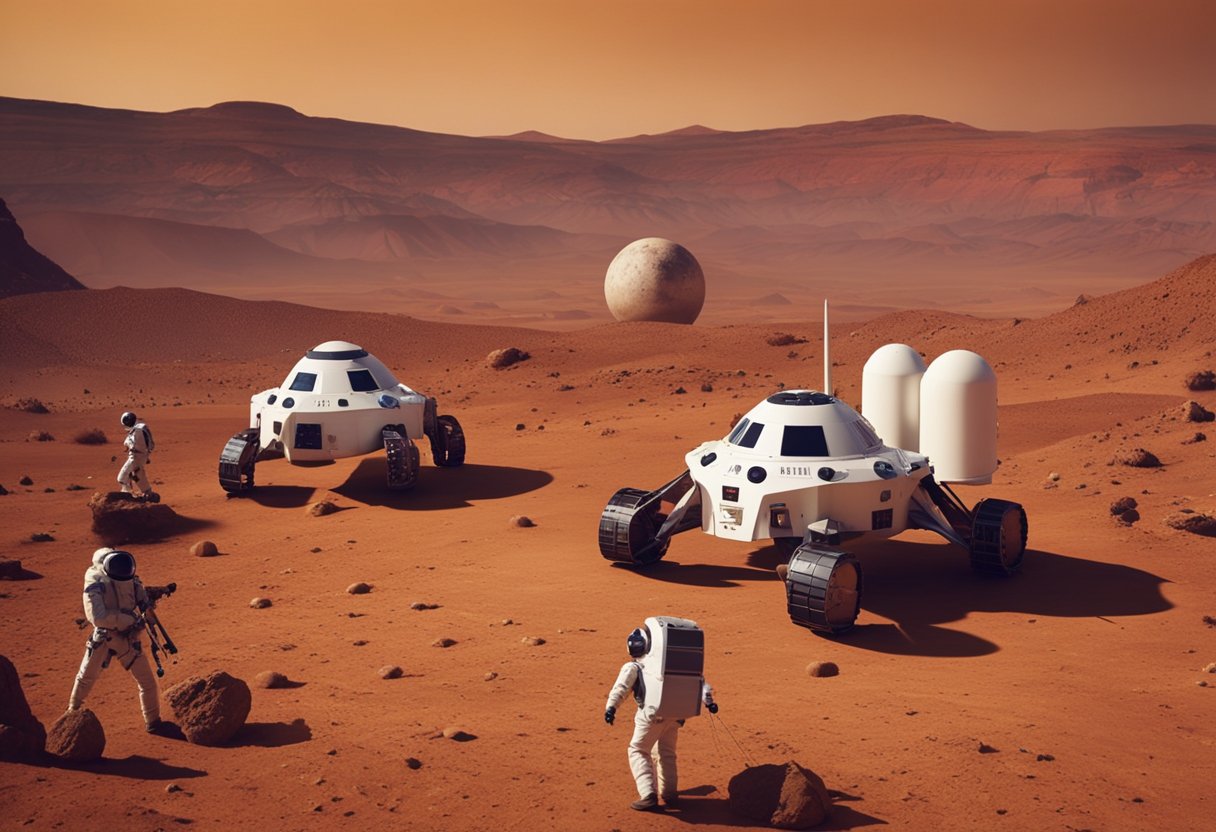
In charting the course to Mars colonisation, we’ve witnessed a series of pivotal moments from both governmental and private entities. These achievements have paved the way for the potential expansion of humanity onto another planet.
The relentless pursuit of Mars exploration by these agencies not only fuels our science and spacecraft advancements but also stokes the dreams of our future amongst the stars. With each lander touching down on Martian soil, we step closer to the day when we, as a species, become multiplanetary.
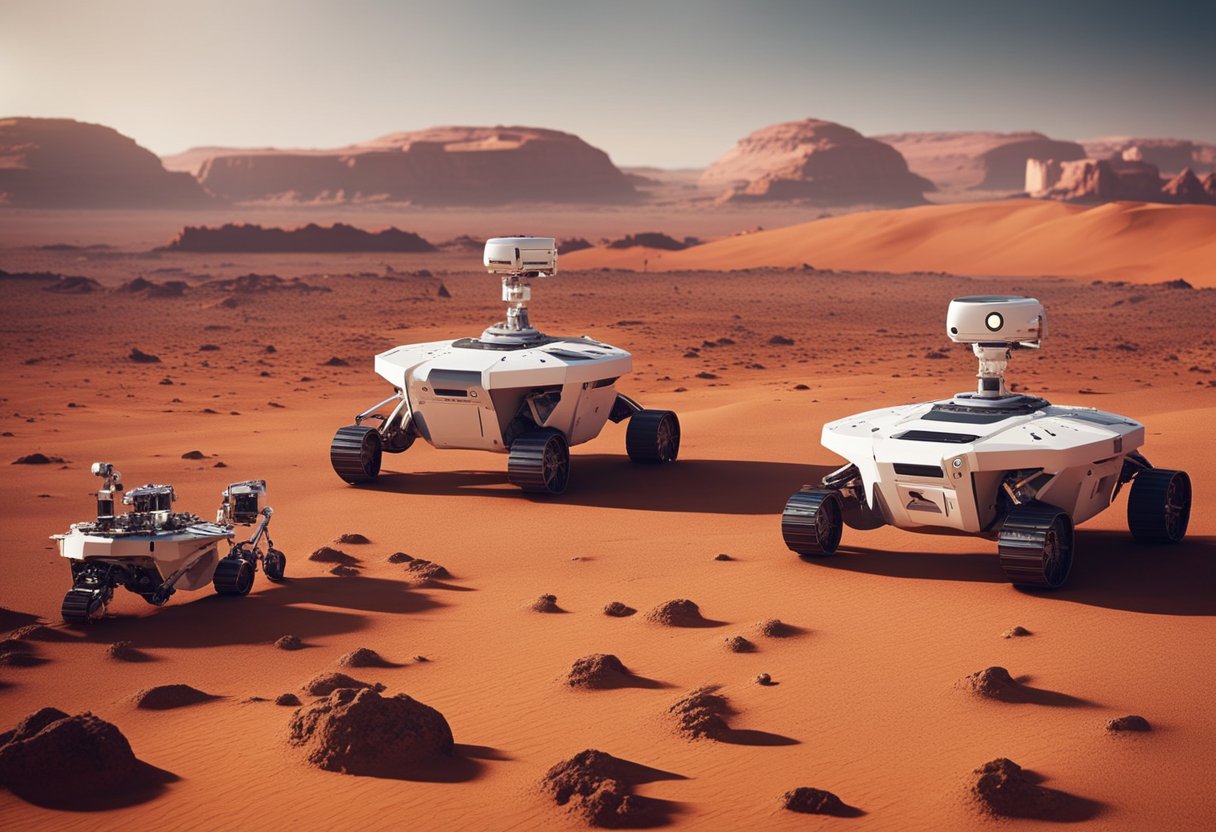
The journey to colonise Mars is propelled by significant strides in space technology, focusing on advanced propulsion systems for travel and the development of sustainable life support within habitats.
The heart of interplanetary travel lies in the propulsion system. Recently, various innovations in propulsion technology have been developed, enabling faster voyage times between Earth and Mars. These range from chemical-based rockets, which are currently the standard, to more experimental approaches like ion thrusters and nuclear thermal propulsion. Within SpaceVoyageVentures.com’s catalogue, there are detailed insights into spacecraft design that optimise fuel efficiency and safety for passengers.
Spacecraft are not just transport vehicles; they serve as preliminary habitats, laboratories and storage units. Hence, the design of these spacecraft now integrates modular cabins, robust shielding against cosmic radiation and micro-meteorites, and scalable life-support systems. We’re seeing spacecraft that enable in-flight repairs and adjustments – a concept crucial for the months-long journey to Mars.
Upon arrival at Mars, the survival of humans hinges on the robustness of the life support systems and habitats. We have designed closed-loop life support systems that recycle water and air, immensely reducing the need for supplies from Earth. Food production technologies, like advanced hydroponics and algae bioreactors, are integral for sustainable living on the Red Planet.
Mars habitats, still in conceptual and prototype stages on sites like SpaceVoyageVentures.com, are speculated to be built from regolith-based concrete, effectively utilising local materials. Habitat designs are incorporating 3D printing technology, allowing expedient construction of structures upon arrival. A continuous and reliable link through communications satellites is vital for both life support monitoring and ensuring connection with Earth, fostering a conceivable sense of safety and community in the Martian environment.
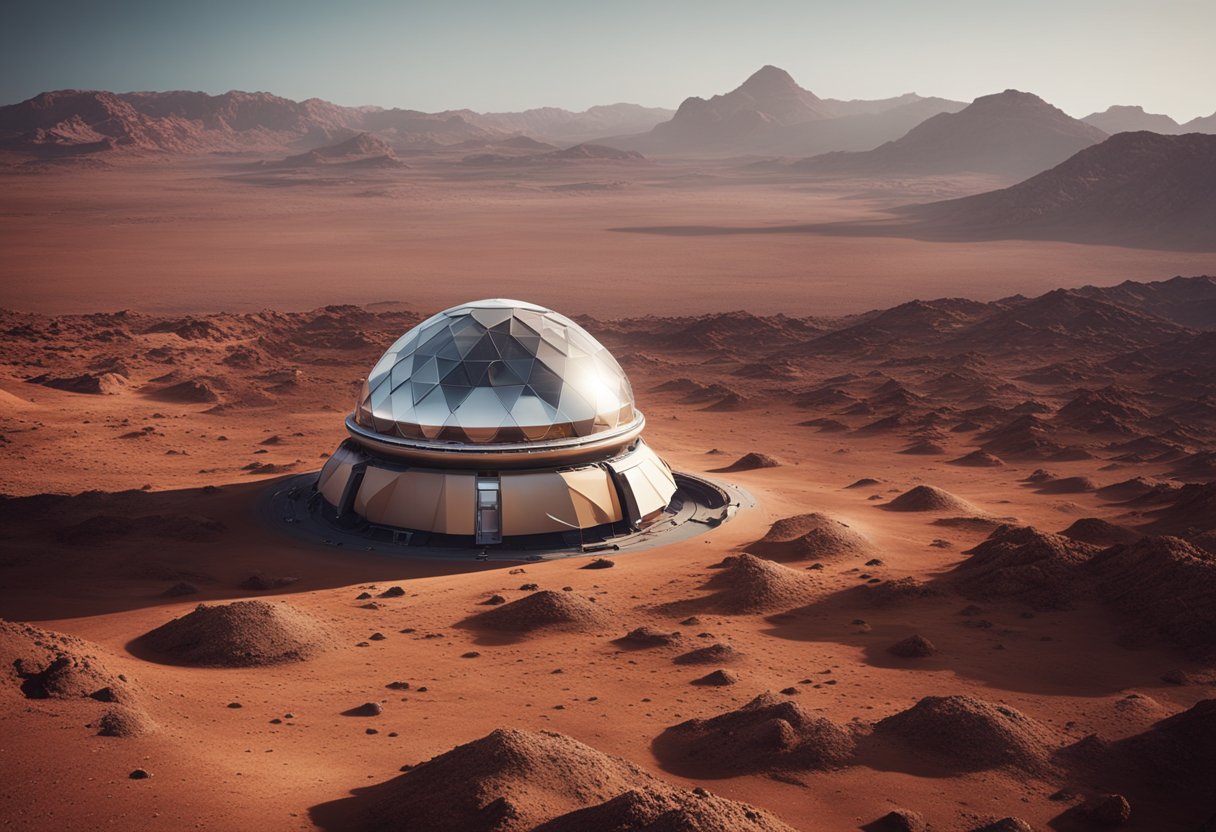
Before we embark on the arduous journey of establishing a Martian settlement, it’s crucial to understand the substantial challenges we face. These range from significant health risks due to radiation to the logistical and technical hurdles that must be overcome to ensure sustainability and safety.
Radiation poses one of the most serious health risks to humans during interplanetary travel and on Mars. Unlike Earth, which has a protective magnetic field and atmosphere, Mars offers little shielding from cosmic rays and solar radiation. This increases the risk of cancer and other health issues, potentially leading to premature extinction of unshielded populations. Farming, which is essential for sustainability, will also have to contend with these radiation levels, which could affect crop viability.
The challenges don’t stop at radiation; there are numerous logistical and technical hurdles in our path. Sustainable life-support systems must be established, capable of recycling water and air, and reliable farming techniques must be developed to grow food on Martian soil. Isolation and the vast distance from Earth present further complications, from psychological effects on inhabitants to the difficulty of transporting supplies. The space industry is hard at work innovating solutions to these problems, making the dream of settling on Mars a closer reality.
By addressing these issues head-on, with the cutting-edge technology and ingenuity of SpaceVoyageVentures.com, we move closer to transforming the red planet from a barren world into a thriving new branch of human civilization.
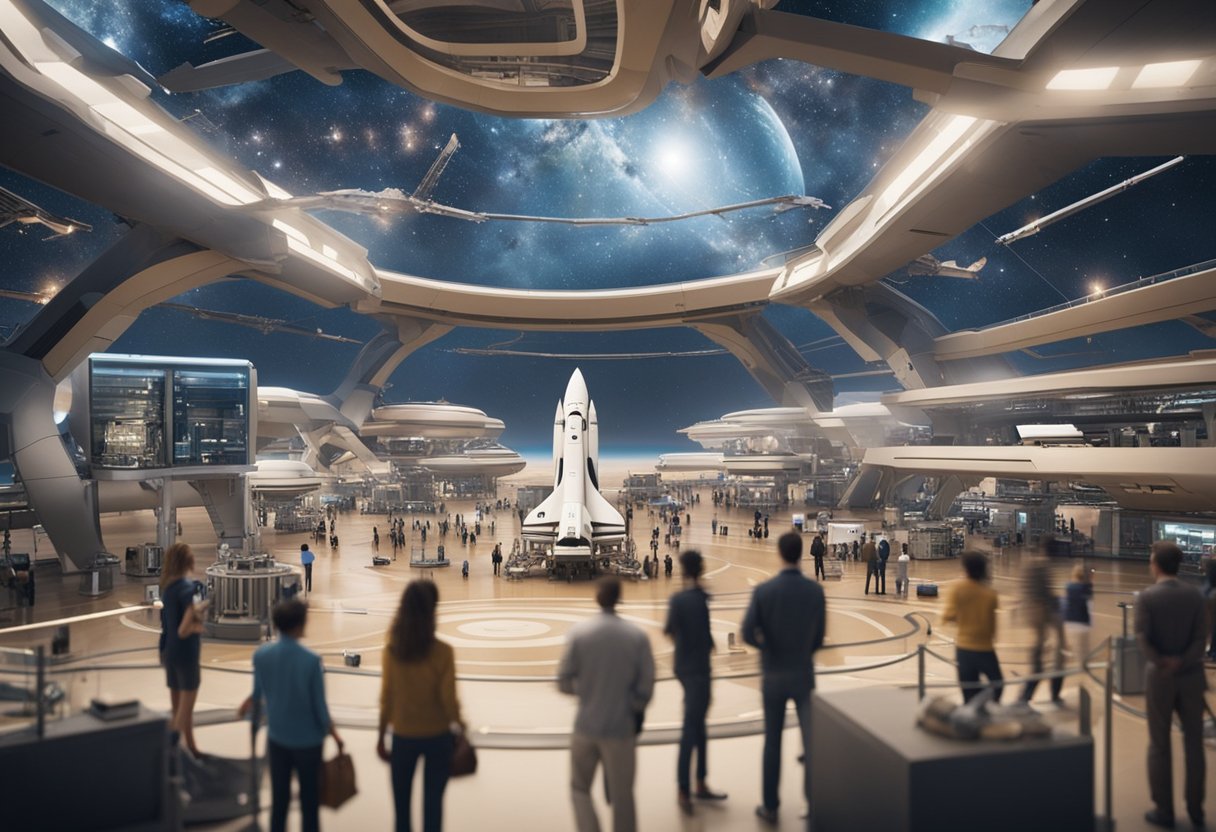
When contemplating the prospect of Mars colonisation tours, we must closely examine both the economic viability and the ethical implications. Our understanding of these aspects will greatly influence the trajectory of humanity’s multi-planetary aspirations.
Funding and Investment for Mars colonisation tours is a complex task that entails vast sums of money. Partnerships among government entities, like NASA, and leading players in the space industry, such as SpaceX and its founder Elon Musk, are critical. These partnerships aim to pool resources and expertise, thus maximising the chances of sustainable colonisation. In fact, websites like SpaceVoyageVentures.com have begun to chronicle the nascent space tourism sector, highlighting the burgeoning community interest and potential investment opportunities.
Ethics of Colonisation must address the legacy of colonialism and its potential repercussions in space exploration. Our aim is to prevent the replication of historical injustices within extraterrestrial environments and ensure that Mars colonisation benefits all of humanity, not just a privileged few.
In navigating these two pivotal areas, we are laying the groundwork for not just the successful colonisation of Mars, but also for an ethical framework that future generations can be proud of.
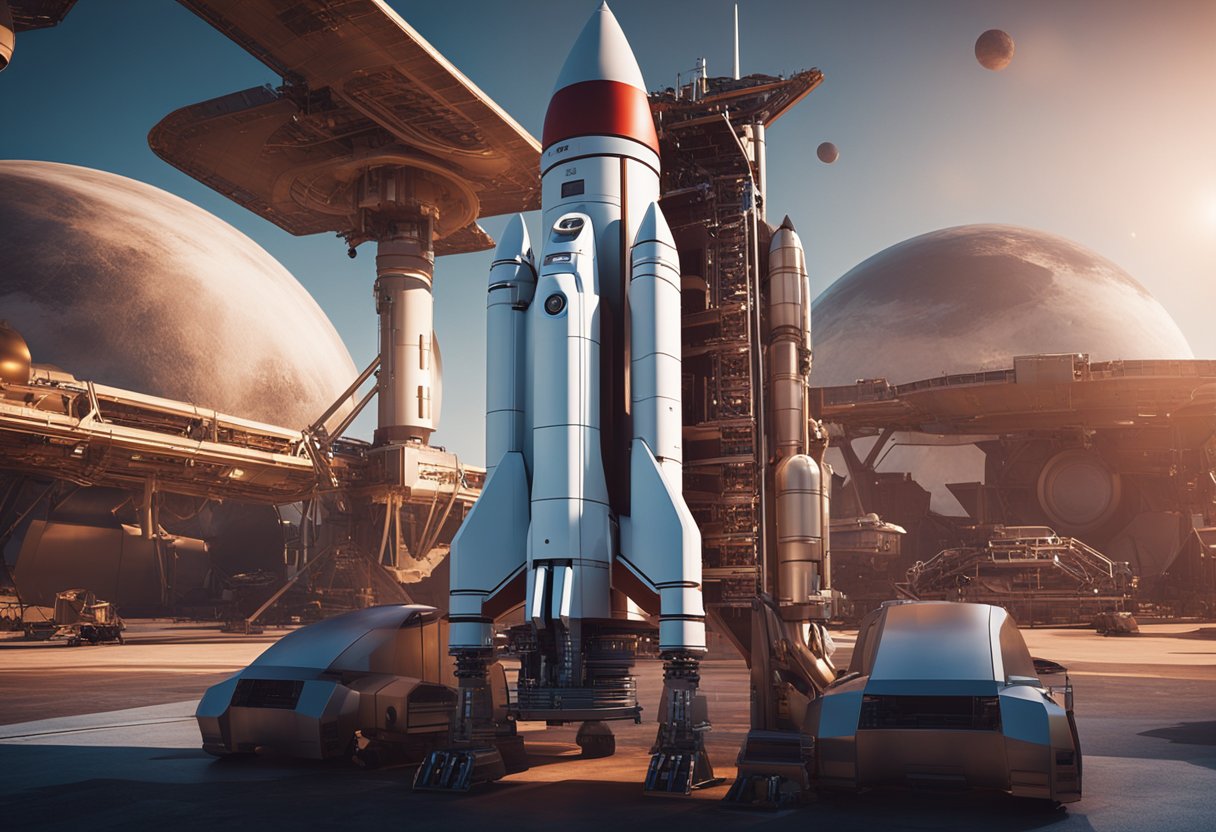
Before we embark on our unprecedented journey to establish a foothold on Mars, we must meticulously prepare. We need to ensure that every individual is thoroughly trained and the foundation for a sustainable community is laid.
We understand that the success of colonising Mars hinges on a robust training and selection process. Our astronauts must be equipped to handle the mental and physical demands of life on a different planet.
Once on Mars, long-term sustainability is the linestone of our colony’s success. Community building principles are integral from the.get-go to cultivate not just survival, but thriving civilisation.
In crafting these subsections, our goal is to provide a blueprint that is comprehensive and conducive to the formidable task at hand. Our mission aligns with the visionary foresight seen at SpaceVoyageVentures.com, as we plot the course for not just travel, but habitation beyond our Earthly home.
As we gaze towards the red horizon, Mars colonisation stands as a beacon of progress, promising advancements and safeguards for humanity. It presents an unprecedented opportunity to propel our scientific understanding and ensure our species’ long-term survival.
Colonising Mars opens a new chapter in our quest for knowledge, serving as a live laboratory for scientific inquiry. We’re poised to make profound discoveries about Mars’ geology, its potential for past or present life, and the workings of our solar system. Terraforming efforts, though in the realm of science fiction for now, could teach us invaluable lessons about climate change and ecological engineering — lessons that might be key to rectifying our own environmental missteps on Earth.
Our spread to the Martian surface is not just a novelty; it’s a crucial step in diversifying human locations throughout the solar system, thus drastically reducing the risk of human extinction. By establishing a foothold on Mars, we ensure that our species could endure cosmic threats, such as asteroid impacts or irreversible climate change, that could render Earth inhospitable. This strategic expansion is essentially an insurance policy for humanity’s future.
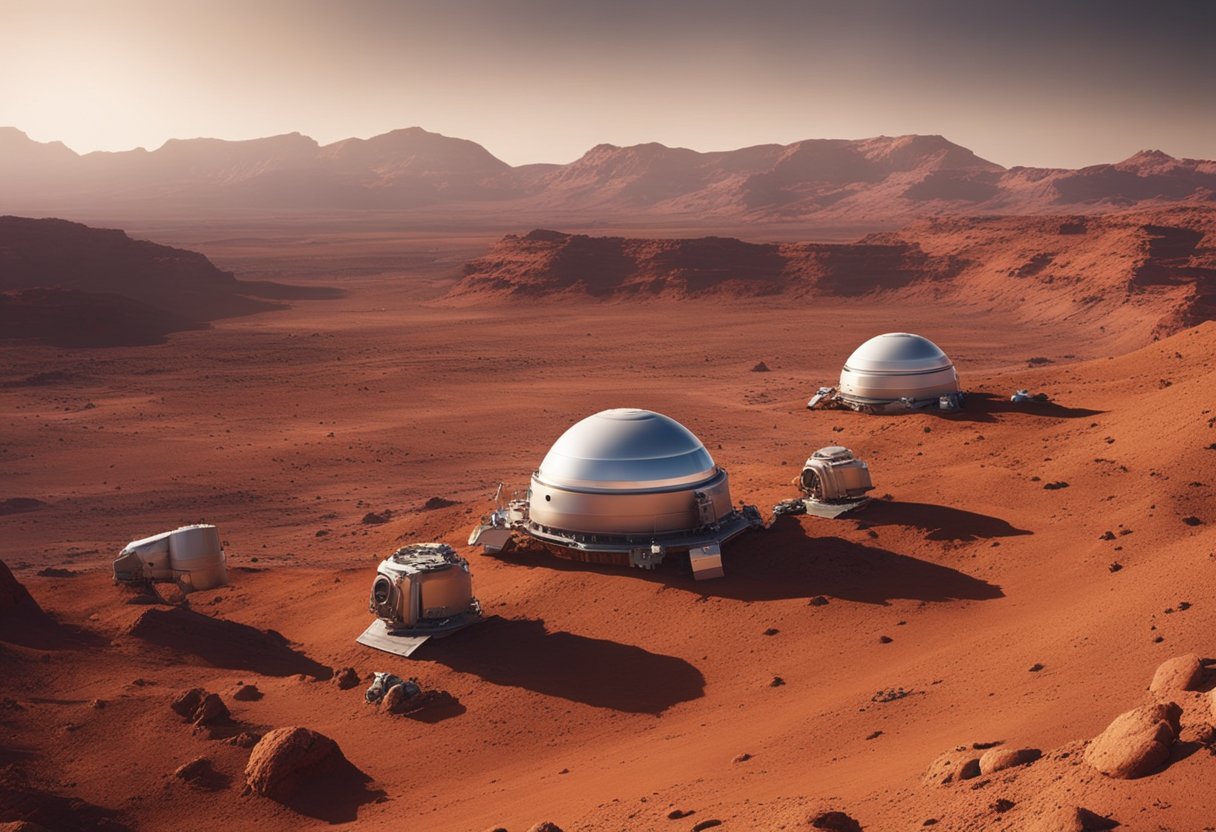
Before envisioning footprints on Martian soil, we must address the environmental implications of our cosmic endeavours. The thin atmosphere and harsh climate of Mars present significant challenges that require careful consideration regarding terraforming and resource management.
Terraforming Mars has been the subject of theoretical discussions for decades. The process would involve altering the Martian environment to make it hospitable for human life, which presupposes significant changes in temperature, atmosphere, and potentially even weather patterns to eventually introduce concepts such as rain to the Martian climate.
Efficient utilisation and extraction of Martian resources are vital for the sustainability of a colonised Mars. Our approach must be informed and prudent, ensuring the least invasive methods to preserve the integrity of Martian nature.
Our knowledge of Martian soil, aided by research such as the comprehensive assessment found on spacetech.media, will inform the techniques we employ to extract these resources responsibly. Moreover, as SpaceVoyageVentures.com indicates, the environmental strategies we develop today will pave the way for future tourism and colonisation missions, harmonising human presence with the Martian ecosystem.
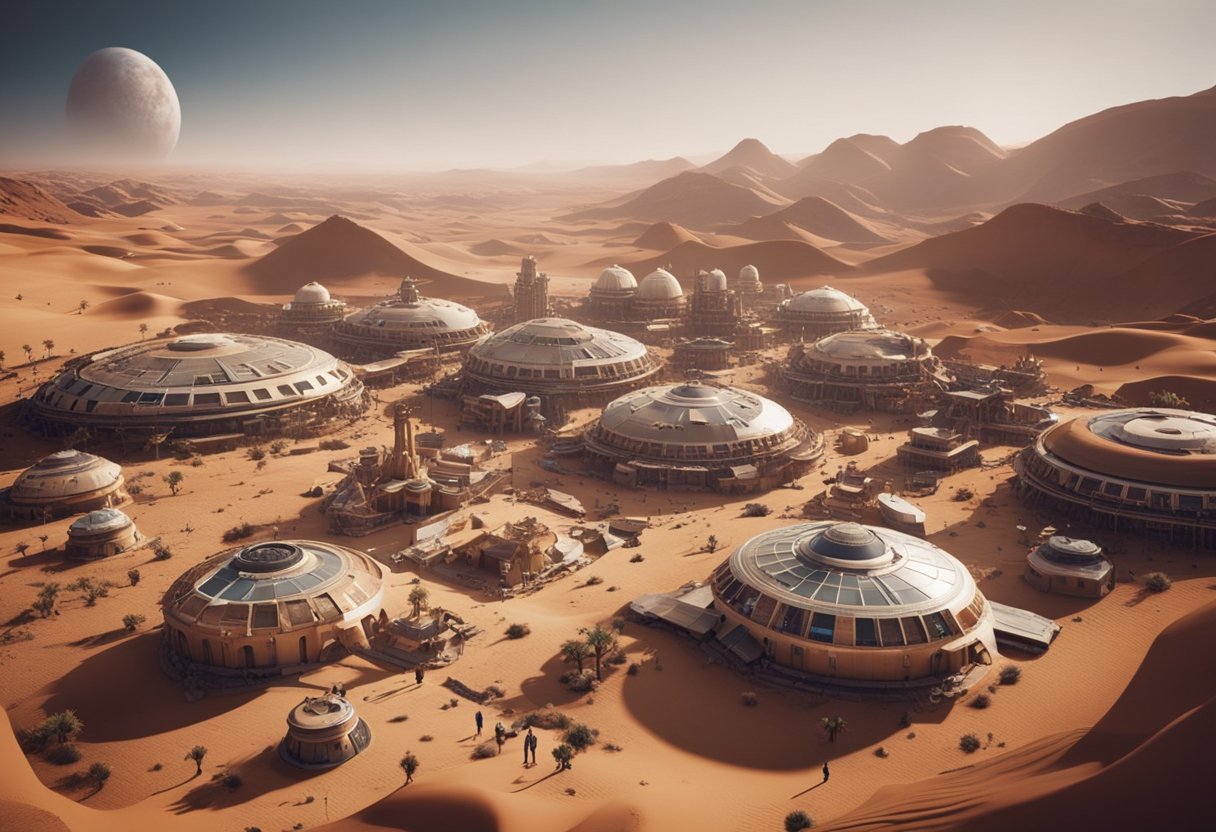
Mars colonisation has already begun to profoundly influence our cultural landscape, from the realms of science fiction to the aspirations of young scientists. This cultural shift can be seen in various aspects of society, particularly in entertainment and education.
The possibility of colonising Mars has always captured the imagination of writers and filmmakers. With the advancements in space exploration, our science fiction narratives have evolved from mere fantasy to plausible futures. We see a surge in content across platforms, with films, television series, and books delving into the details of life on Mars and the challenges of interplanetary travel. Social media too buzzes with discussions and speculation about Martian living, influencing both mainstream media and niche science fiction communities.
Our collective efforts in Mars exploration serve as a beacon, inspiring future generations to dream big and pursue careers in STEM fields. Through educational programs, we’re witnessing an unprecedented interest in space science and technology amongst students. As we share progress and potential through sites like SpaceVoyageVentures.com, we’re not only charting a course for future space tourists but also fostering a community of informed enthusiasts eagerly anticipating their chance to witness the Red Planet first-hand.
As we consider terraforming technologies and the establishment of a long-term settlement on Mars, envisioning the daily life and regulatory frameworks aboard such an ambitious extraterrestrial venture is essential.
In envisaging the lifestyles of the settlers, we must take into account the unique environmental conditions of Mars, such as reduced gravity and high radiation levels. Mars colonization will demand an advanced habitat design that shields occupants from radiation and provides essential life support systems. The settlements are likely to feature hydroponic gardens not just for sustenance but also for the psychological benefits of green space. Our pioneers may don specialised suits for exterior work, and their habitat will include facilities for both rigorous exercise to combat muscle atrophy and communal areas to foster a strong sense of community.
Designing an effective system of interplanetary governance will be paramount to maintain order on a colony on Mars. The legal framework that we develop must address both terrestrial legal principles and the novel contexts of Martian life. We envisage a blend of international space law and self-governance, with residents partaking in democratic processes. Issues such as resource allocation, territorial claims among colonization sites, and relations with Earth will require careful articulation within this legal tapestry to ensure a fair and cooperative Mars colony.
While we continue to investigate possible future scenarios, SpaceVoyageVentures.com serves as a repository of insights into the progress and projections of the mass aspiration to become an interplanetary species.
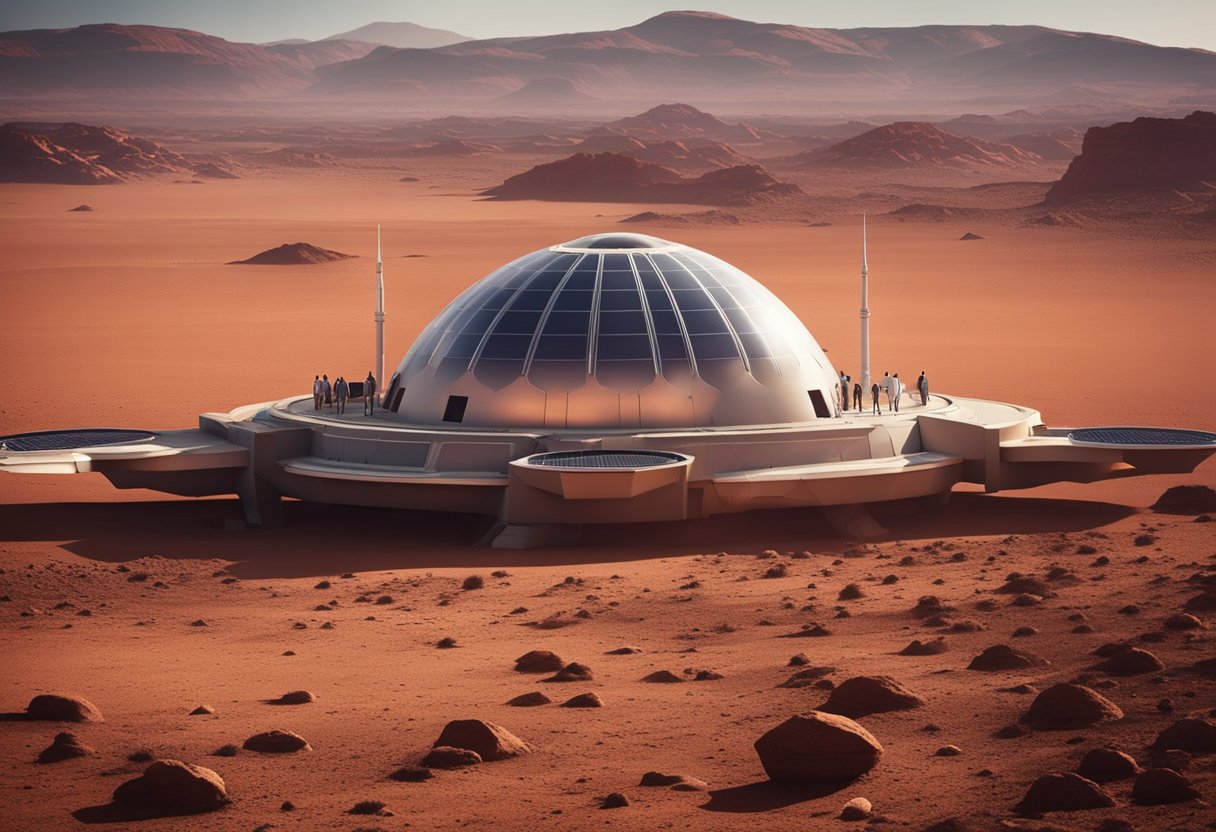
In the realm of Mars colonisation, remarkable strides have been made. Our understanding of the Red Planet has been enriched by a series of groundbreaking missions, laying the foundation for a future colony. The implications of these advancements are profound, providing a wellspring of knowledge that could catalyse scientific and technological revolutions here on Earth.
Sustainability is the cornerstone of establishing a thriving community on Mars. Our efforts hinge on developing self-sustaining habitats capable of supporting human life in the harsh Martian environment. As we progress, the lessons we learn may unlock new ways of living that can be mirrored back home, potentially leading to innovations in sustainable living.
Advancing space exploration fosters unity and cooperation, bringing together individuals from diverse backgrounds with a common goal. We extend our presence in the cosmos, not merely for the sake of exploration, but to safeguard humanity’s future. The notion of a multi-planetary species ceases to be science fiction and edges closer to reality.
Collectively, we stand at the forefront of one of history’s most exhilarating chapters. With prudent planning and steadfast resolve, we will transform Martian colonisation dreams into actuality. The space tourism industry is blossoming, hinting at a time when Mars may not be just for astronauts, but for explorers at heart.
In this venture, we are guided by an unwavering commitment to expand human horizons and nourish our innate curiosity. Our gaze is firmly set on the horizon, ready to meet the challenges that lie ahead with enthusiasm and perseverance.

We’ve gathered the most pertinent questions about Mars colonisation to provide insight into this monumental venture.
Unmanned missions to the Red Planet aim to gather critical data about Mars’s atmosphere, geology, and potential for supporting life. These missions pave the way for future human exploration.
NASA’s current timeline anticipates sending humans to Mars in the 2030s. This mission will test the technologies and capabilities required for a sustained presence on the Martian surface.
SpaceX envisions utilising its Starship spacecraft for long-duration flights to establish and maintain a human settlement on Mars, focusing on reusability and cost reduction.
The financial outlay for colonising Mars involves investment in space transport, life support systems, and infrastructure. The costs are substantial, but partnerships and advancements in technology aim to make it more feasible.
Reasons for colonising Mars include scientific research, ensuring the continuity of humans as a multi-planetary species, and the potential economic benefits from mining and tourism.
Suitable locations for colonies on Mars are determined by access to water ice, manageable temperatures, and the potential for in situ resource utilisation to support life and ongoing operations.